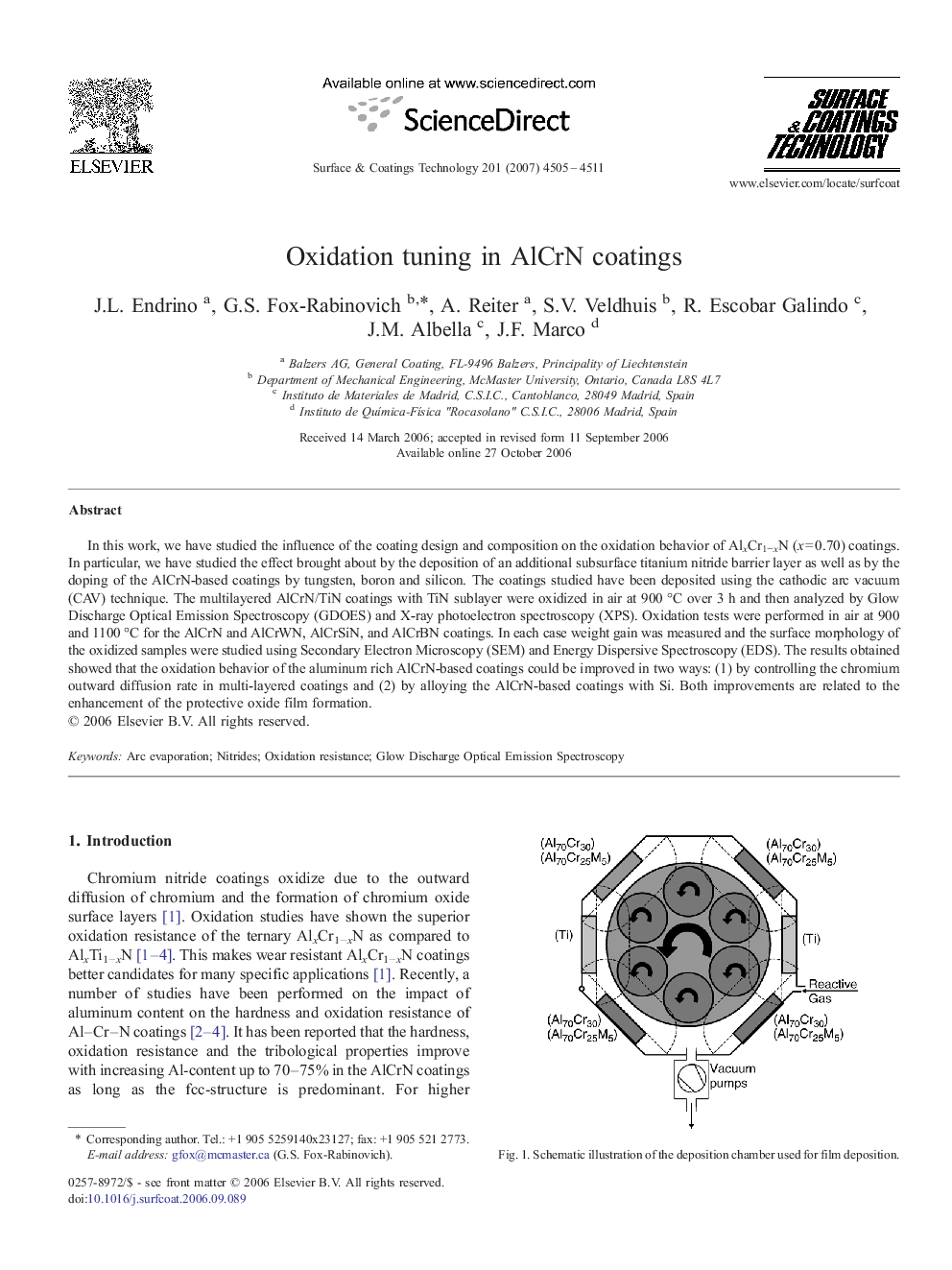| Article ID | Journal | Published Year | Pages | File Type |
|---|---|---|---|---|
| 1662592 | Surface and Coatings Technology | 2007 | 7 Pages |
In this work, we have studied the influence of the coating design and composition on the oxidation behavior of AlxCr1−xN (x = 0.70) coatings. In particular, we have studied the effect brought about by the deposition of an additional subsurface titanium nitride barrier layer as well as by the doping of the AlCrN-based coatings by tungsten, boron and silicon. The coatings studied have been deposited using the cathodic arc vacuum (CAV) technique. The multilayered AlCrN/TiN coatings with TiN sublayer were oxidized in air at 900 °C over 3 h and then analyzed by Glow Discharge Optical Emission Spectroscopy (GDOES) and X-ray photoelectron spectroscopy (XPS). Oxidation tests were performed in air at 900 and 1100 °C for the AlCrN and AlCrWN, AlCrSiN, and AlCrBN coatings. In each case weight gain was measured and the surface morphology of the oxidized samples were studied using Secondary Electron Microscopy (SEM) and Energy Dispersive Spectroscopy (EDS). The results obtained showed that the oxidation behavior of the aluminum rich AlCrN-based coatings could be improved in two ways: (1) by controlling the chromium outward diffusion rate in multi-layered coatings and (2) by alloying the AlCrN-based coatings with Si. Both improvements are related to the enhancement of the protective oxide film formation.
